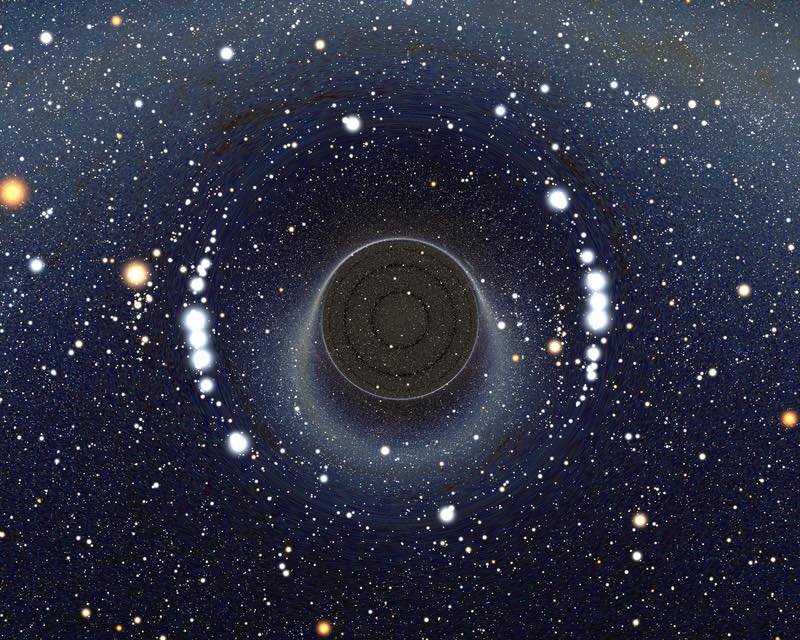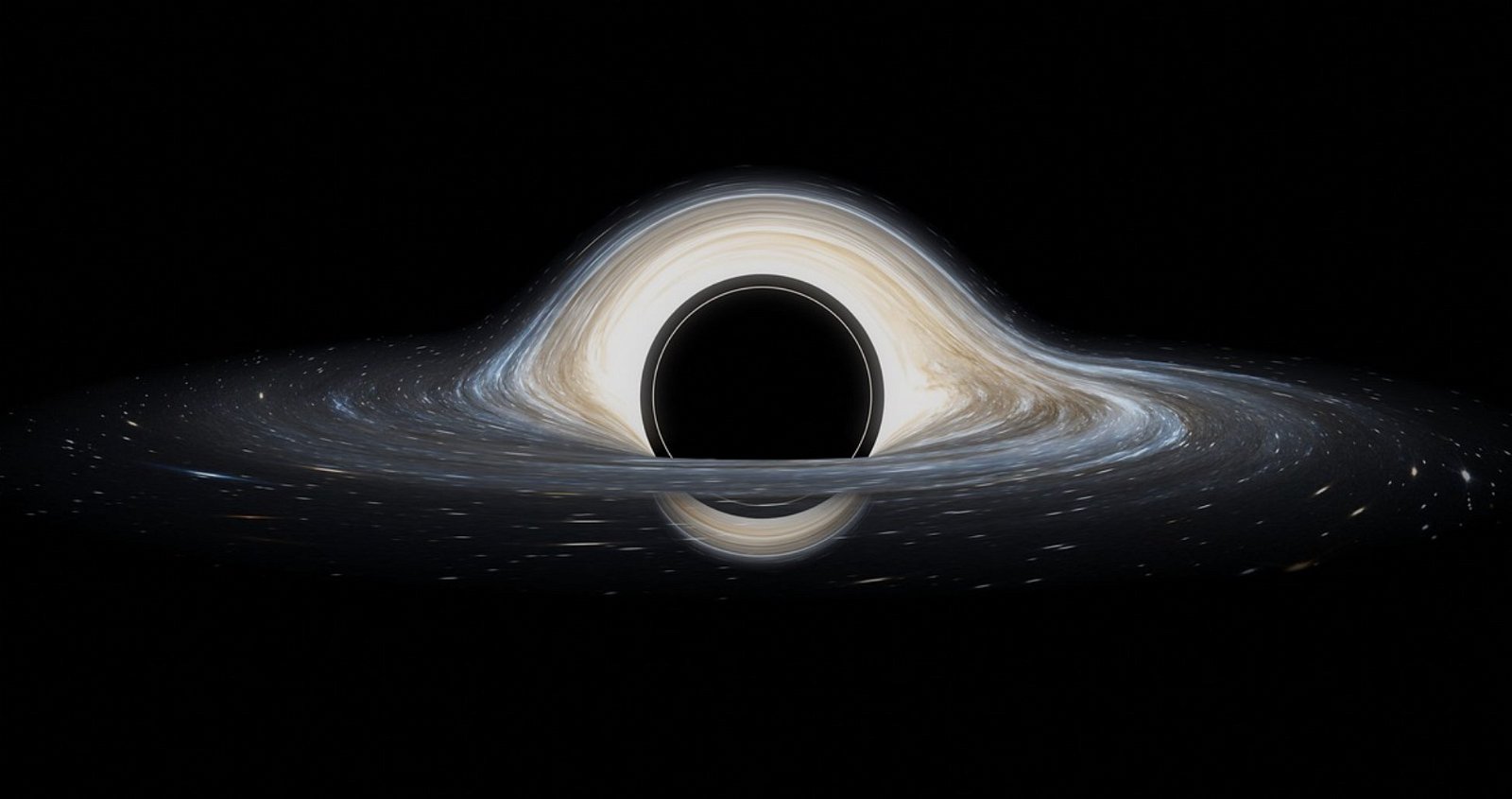A Bulgarian research team has announced a method they say could be used to detect wormholes, theoretical structures that—if proven to exist—might be capable of connecting vastly distant points in spacetime.
Wormholes have long captured the imaginations of physicists. Part of that fascination has to do with the fact that wormholes, much like the concept of time travel, are consistent with Einstein’s general theory of relativity. Despite their theoretical plausibility, scientists have yet to find correlates for these concepts in practical reality.
Detecting wormholes is problematic, mainly because these mind-bending structures would hypothetically be almost indistinguishable from black holes, regions of space that are the likely products of a star that has exhausted its fuel and collapsed into itself, detectable by scientists mainly by the intense gravity they exert on nearby objects in space.
Add to their similarity to black holes the fact that we still aren’t certain if wormholes actually exist, and the process of reliably detecting them becomes even more challenging.
That may soon change, however, based on the findings of a team with the University of Sofia in Bulgaria, who say they have developed a novel new method that could help scientists differentiate between black holes and their hypothetical cousins.
In a new paper published in Physical Review D, the team, consisting of Valentin Deliyski, Galin Gyulchev, Petya Nedkova, and Stoytcho Yazadjiev, studied the linear polarization produced by accretion disks, the rotating formations of matter visible around black holes and other astronomical objects that consist mostly of gases, plasma, or stellar dust.
According to the team’s paper, they searched for specific signatures in the polarization properties of these formations, which they hoped might help them determine the difference between black holes and any suspected candidates for wormholes.
According to the team’s paper, their study relied on the analysis of images of suspected regions of space where wormholes might be lurking comprising various inclination angles, compared with indirect imagery featuring strong gravitational lensing, and finally, images displaying polarized radiation that “reaches the asymptotic observer through the wormhole throat.”
These images were then compared to one of the simplest kinds of black holes, known as a Schwarzschild black hole. First conceptualized by Karl Schwarzschild in 1915 shortly after Einstein unveiled his theory of general relativity, these black holes are believed to possess mass but have no electric charge or spin. Based on these comparisons, the team was able to produce a new, simplified model of a hypothetical wormhole’s throat, which allowed them to form predictions on how matter encircling it might behave differently from matter being sucked into a black hole.


According to the researcher’s models, light being emitted by any particles encircling a wormhole would become polarized by the strong magnetic fields they produce. Conveniently, these very sorts of polarized emissions have already been detected in recent years, leading to the first images of M87 that were captured in 2019. Similar detections also resulted in the imagery of Sagittarius A* captured earlier in 2022.
Based on the team’s models, M87 could itself be a wormhole, leaving open the possibility that wormholes could be hidden in association with many other black holes. The question is, how exactly does one go about detecting them?
One way involves observing suspected wormholes indirectly with the help of gravitational lensing, which might reveal some of the properties the Bulgarian team’s modeling suggests could differentiate such structures from black holes. As they note in their paper, “More significant distinctions are observed for the strongly lensed indirect images,” adding that the polarization intensity alongside suspected wormholes “can grow up to an order of magnitude compared to the Schwarzschild black hole.”
Alternatively, if a suspected candidate were to be detected that could be viewed at an angle where light is observed passing its entrance and traveling in the direction of Earth, the resulting signatures might also allow for the detection of a wormhole. Specifically, the researchers describe that “radiation from the region across the wormhole throat leads to the formation of an additional structure of ring images,” which can be distinguished on account of its “distinct polarization properties.”
Although the team concedes that distinguishing wormholes based solely on the polarization they produce would be tricky, images featuring strong gravitational lensing and polarization of radiation as it crosses the wormhole’s entrance do help by providing “characteristic signatures which can serve as probes for horizonless objects.”
In other words, the unique combinations of signatures the team describes, based on their new models, could greatly aid in detecting which black holes might behave more like wormholes… long-speculated structures in spacetime that could very well have been hiding in plain sight all along.
The team’s paper, “Polarized image of equatorial emission in horizonless spacetimes: Traversable wormholes,” was published in Physical Review D on November 10, 2022.
Micah Hanks is Editor-in-Chief and Co-Founder of The Debrief. Follow his work at micahhanks.com and on Twitter: @MicahHanks.

